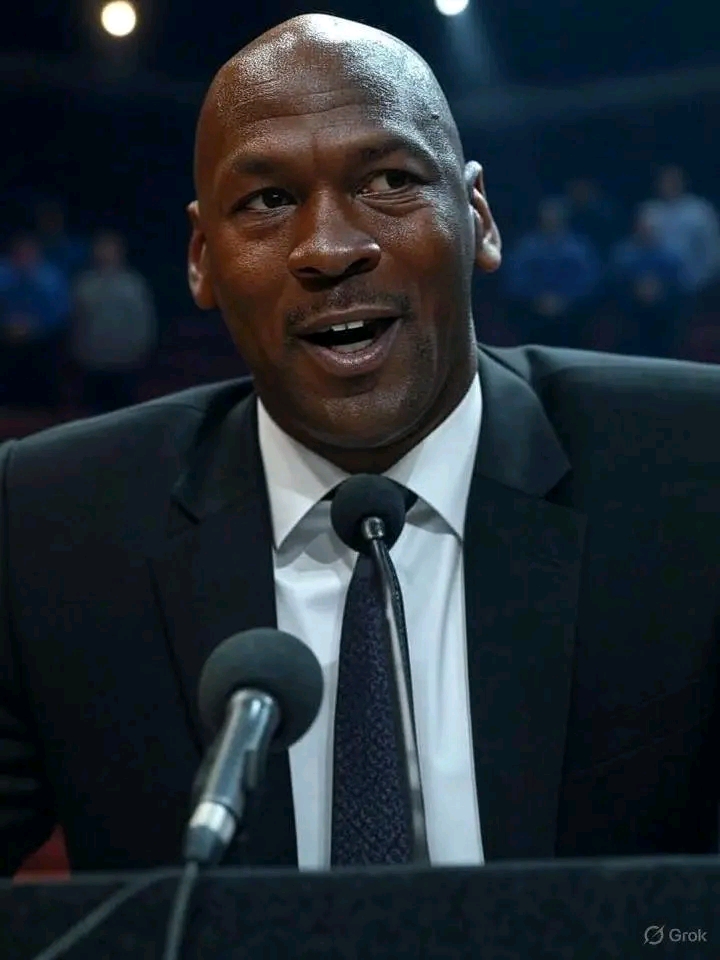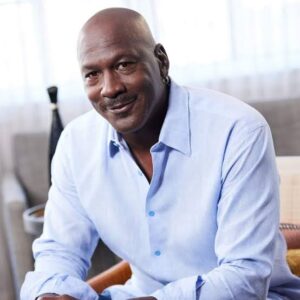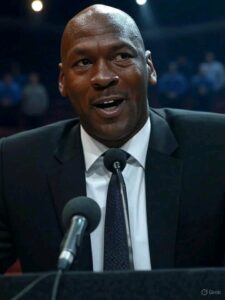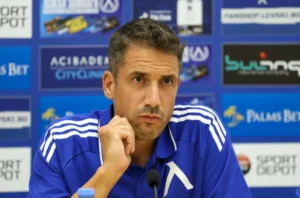
On a crisp afternoon at 02:48 PM WAT on Monday, July 14, 2025, the University of North Carolina (UNC) campus buzzed with an electric anticipation that hadn’t been felt since the days of its most legendary alumnus. Michael Jordan, the iconic figure whose name is synonymous with basketball greatness, made a surprise return to his alma mater, stepping onto the hallowed grounds of the Dean Smith Center to deliver an announcement that left fans, players, and administrators alike in a state of stunned disbelief. The basketball legend, dressed in an impeccable black suit that exuded authority and charisma, stood before a packed arena, microphones poised, as he revealed a multimillion-dollar investment into the Tar Heels basketball program—a move that promises to reshape the future of the team and solidify his legacy as more than just a player, but a transformative force in the sport.
The day began like any other in Chapel Hill, with students and faculty going about their routines under the Carolina blue sky. Rumors had swirled for weeks about a possible Jordan appearance, fueled by cryptic social media posts from UNC insiders and whispers of a major endowment in the works. Yet, no one could have predicted the magnitude of what was to come. As the clock ticked closer to the announced press conference time, the arena filled with a diverse crowd—students in Tar Heels gear, alumni reminiscing about Jordan’s college days, and media outlets from across the globe, all eager to capture the moment. The air was thick with excitement, and when Jordan emerged from the tunnel, the roar of the crowd was deafening, a testament to the enduring love and admiration he commands.
Jordan, now 62, took his place at the podium, his presence commanding silence as he adjusted the microphones. His speech began with a nod to his past, recounting his time at UNC where he led the Tar Heels to the 1982 NCAA Championship with that iconic game-winning shot against Georgetown. “This place made me who I am,” he said, his voice steady and resonant. “The lessons I learned here, the teammates I played with, the coaches who pushed me—they’re all part of my story. And now, I want to give back in a way that ensures the next generation of Tar Heels can chase their dreams just as I did.” With those words, he unveiled his plan: a multimillion-dollar investment aimed at enhancing the basketball program’s infrastructure, recruiting efforts, and player development initiatives.
The specifics of the investment were staggering. Jordan announced funding for a state-of-the-art training facility, complete with advanced biomechanical analysis tools, sports psychology services, and nutrition programs designed to give UNC players a competitive edge. He also pledged significant resources to the coaching staff, including the hiring of additional specialists and the creation of a player mentorship program that would pair current athletes with former Tar Heels legends. Perhaps most intriguingly, he revealed plans to establish a scholarship fund in his name, ensuring that financial barriers would never prevent talented players from donning the Carolina blue. While exact figures weren’t disclosed—Jordan preferring to let the impact speak for itself—insiders hinted at a sum that could exceed tens of millions, a figure that aligns with his well-documented philanthropy and business acumen.
The announcement wasn’t just a financial boost; it was a cultural earthquake. For decades, UNC basketball has been a powerhouse, with a legacy that includes national championships and a pantheon of NBA stars. Yet, in recent years, the program has faced challenges—stiff competition from rival schools, evolving NCAA regulations, and the ever-present pressure to maintain its elite status. Jordan’s investment arrives as a lifeline, a bold statement that the Tar Heels intend to reclaim their dominance. Fans erupted in cheers, some even shedding tears, as they envisioned a future where UNC could once again be the unrivaled king of college basketball.
Jordan’s decision to invest in UNC also reflects a broader narrative about his post-playing career. Known for his ownership of the Charlotte Hornets and his lucrative Nike partnership, he has long been a figure who transcends the court. This move, however, shifts the focus back to his roots, suggesting a desire to leave a lasting legacy at the institution that launched him to stardom. Critics might argue that such a large investment could raise questions about influence—will Jordan’s involvement extend beyond finances into coaching decisions or player recruitment? For now, he dismissed such concerns with a laugh, insisting, “I’m here to support, not to run the show. The Tar Heels have great leadership already.” Still, his presence looms large, and the basketball world will undoubtedly watch closely to see how his input shapes the program.
The reaction on social media was instantaneous and overwhelming. Hashtags like #JordanReturns and #TarHeelsRise trended globally within minutes, with fans posting videos of the announcement and speculating on the potential recruits this investment might attract. Current players, including standout sophomore guard RJ Davis, took to X to express gratitude, with Davis writing, “Honored to be part of this era. MJ’s belief in us is unreal.” Alumni, including Vince Carter and Rasheed Wallace, echoed the sentiment, praising Jordan’s commitment to the program’s future. The buzz extended beyond basketball circles, with sports analysts debating whether this could set a precedent for other NBA legends to invest in their college roots.

Locally, the impact was immediate. Businesses around Chapel Hill reported a surge in sales of Jordan-branded merchandise, from jerseys to sneakers, as fans celebrated the news. The university’s athletic department hinted at plans for a celebratory event, potentially a game where Jordan could address the crowd again, further cementing the moment in Tar Heels lore. Students, many of whom were born long after Jordan’s playing days, found themselves caught up in the hype, with one freshman telling reporters, “I didn’t get to see him play, but this makes me feel like I’m part of history.”
Yet, beneath the excitement, there are layers to unpack. The NCAA’s evolving landscape, with its recent changes to name, image, and likeness (NIL) policies, means Jordan’s investment could intersect with new financial dynamics for college athletes. Some wonder if this could lead to a model where alumni donations directly benefit players, potentially challenging the amateur ethos of college sports. Others see it as a natural evolution, arguing that figures like Jordan, with their vast resources, can help level the playing field against wealthier programs. The debate is sure to intensify as details emerge.

For now, though, the focus remains on the man at the center of it all. Michael Jordan’s surprise visit and epic announcement have reignited a fire in Chapel Hill, blending nostalgia with ambition. As he stepped away from the podium, waving to the crowd, the image of him in that suit—symbolizing both his past glory and future vision—will linger in the minds of Tar Heels fans. This isn’t just about money; it’s about a legend returning home to ensure his legacy endures, one dunk, one shot, and now one multimillion-dollar gift at a time. The basketball world waits with bated breath to see how this chapter unfolds, but one thing is clear: the Tar Heels are back in the spotlight, and Michael Jordan is leading the charge.





